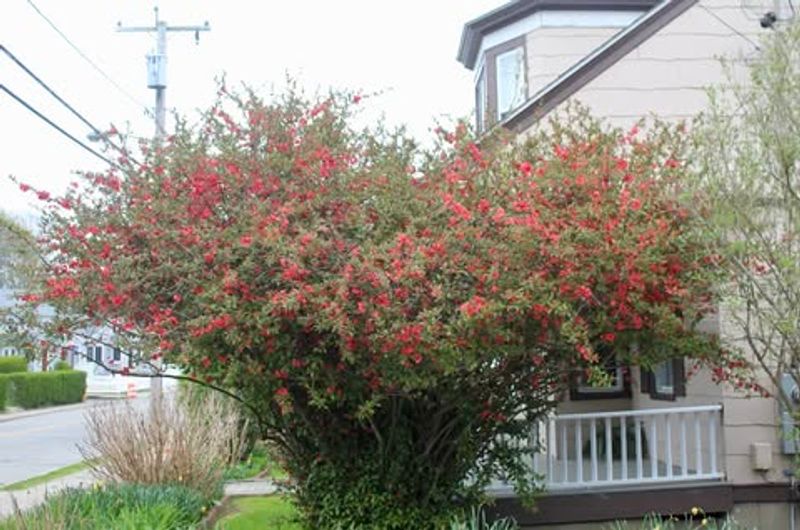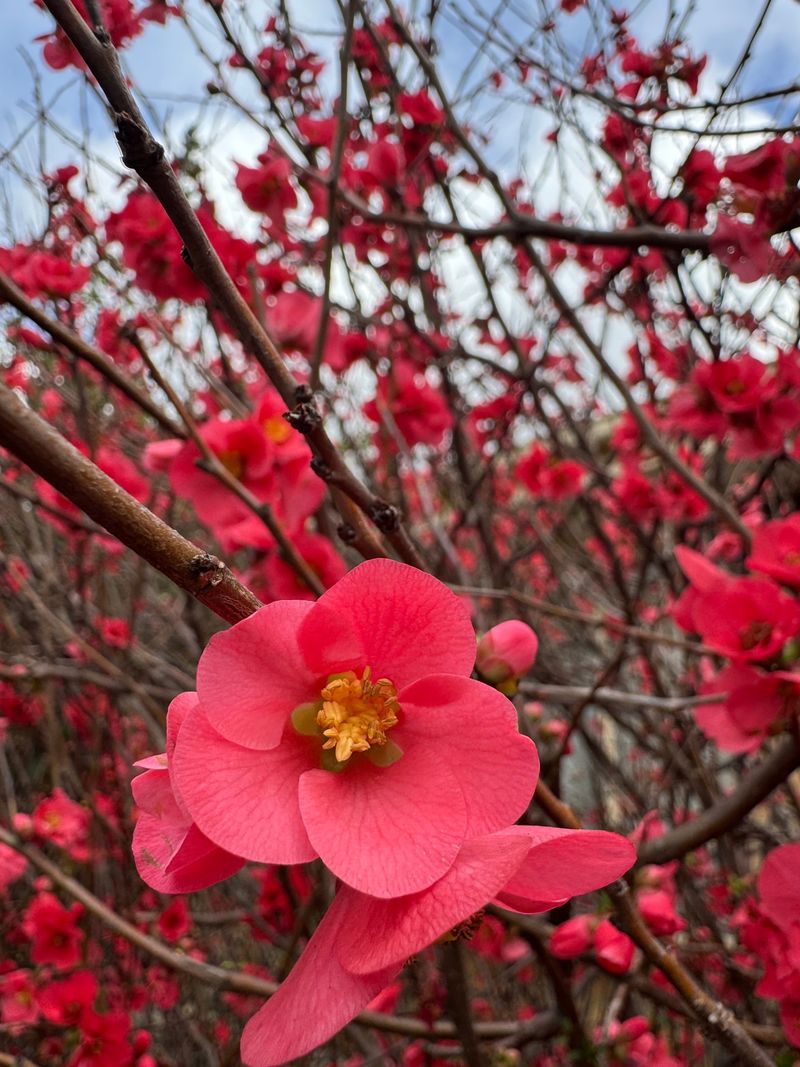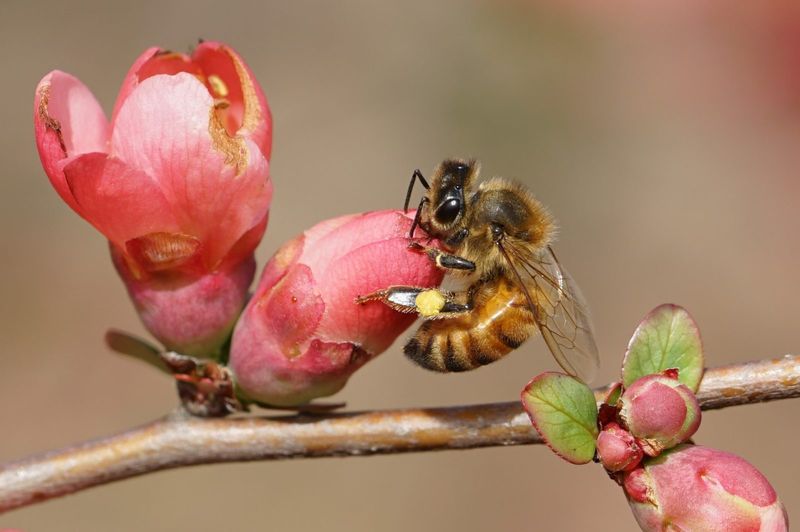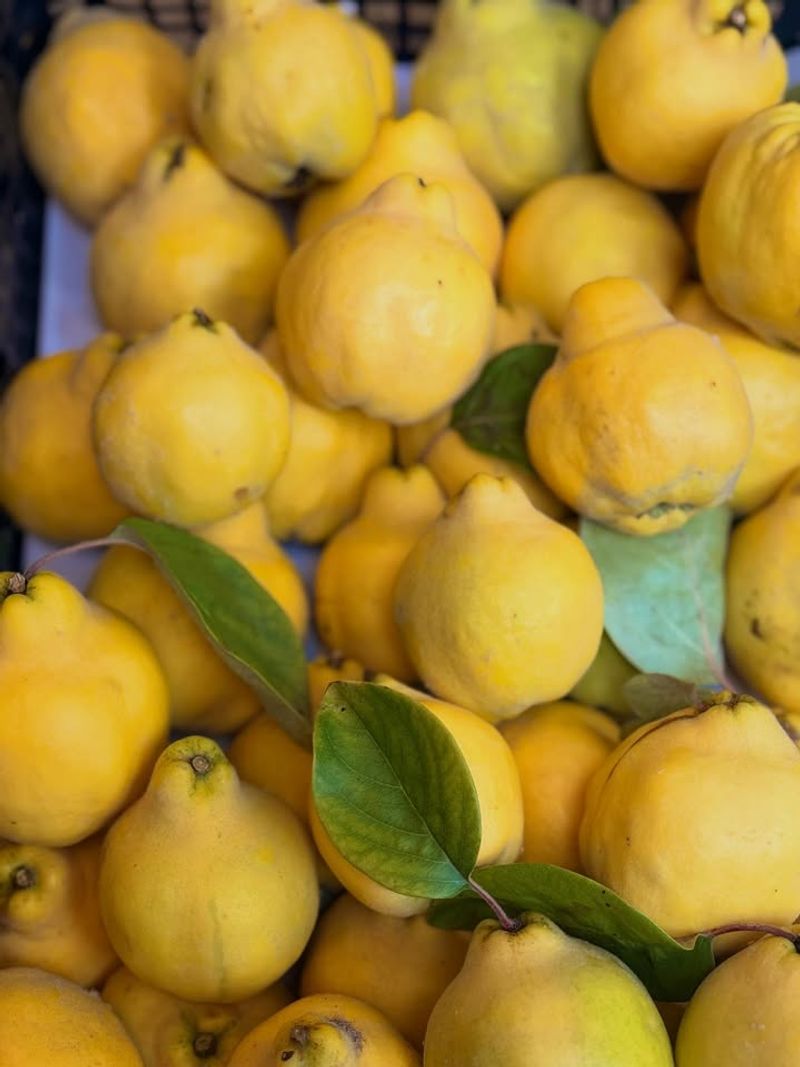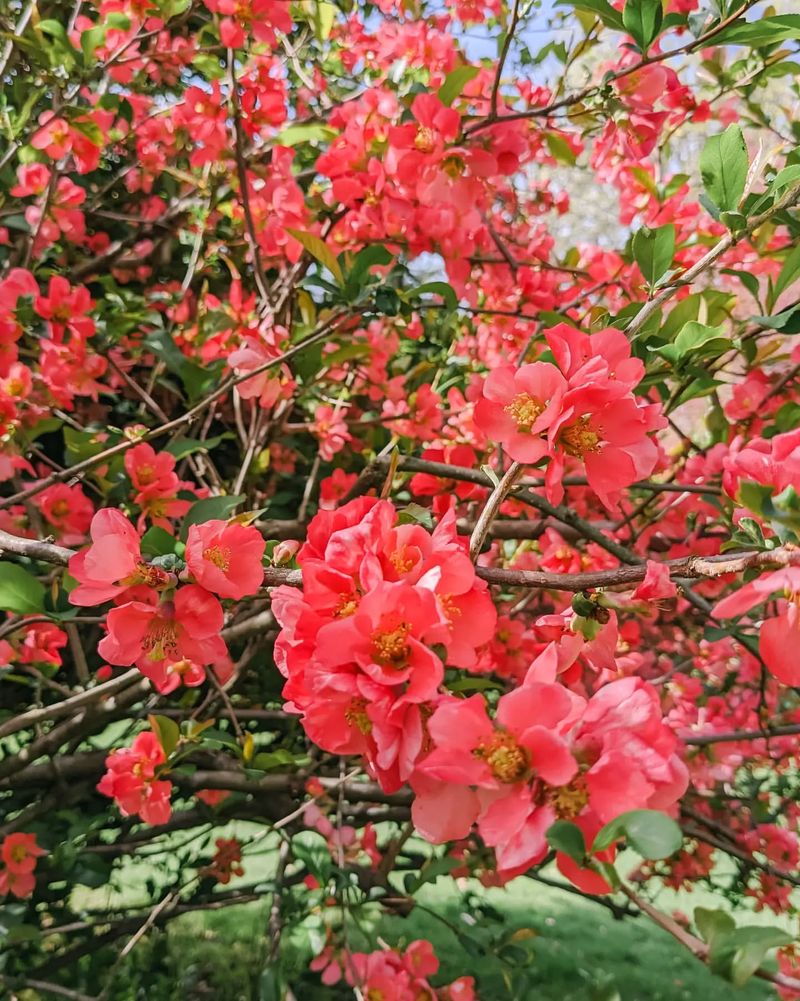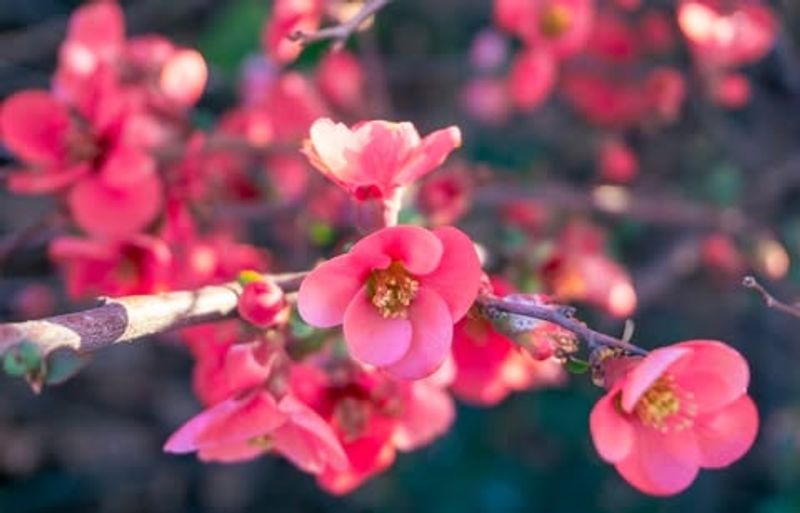Flowering quince is one of those shrubs that truly earns its keep in West Virginia gardens. When late winter or early spring arrives, this tough plant bursts into brilliant red blooms that brighten even the dreariest days.
It thrives in our climate and asks for very little care in return, making it a smart choice for gardeners who want beauty without fuss.
1. Blooms Arrive When You Need Them Most
February and March can feel endless across West Virginia, but flowering quince breaks the monotony with stunning red flowers that appear before leaves even think about unfurling. This early display gives pollinators their first meal of the season and gives you something cheerful to look at when snow might still be on the ground.
Few shrubs deliver such reliable color so early. The blooms cling to bare branches, creating a dramatic show that stands out in any landscape and lifts spirits after a long winter.
2. Handles Our Unpredictable Weather Like A Champ
West Virginia weather keeps everyone guessing, but flowering quince shrugs off sudden temperature swings, late frosts, and surprise snowstorms without missing a beat. Once established, this shrub tolerates drought, humidity, and even clay soil that challenges so many other plants.
Its tough constitution means less worry for you. Whether you garden in the mountains or river valleys, this plant adapts to local conditions and keeps performing year after year without needing special treatment or constant attention from busy gardeners.
3. Requires Almost No Maintenance After Planting
Once your flowering quince settles into its spot, it practically takes care of itself. No fancy fertilizers, no complicated pruning schedules, and no constant watering once roots establish. This shrub fits perfectly into West Virginia gardens where people want results without endless chores.
You might trim it lightly after blooming to shape it, but even that step is optional. The plant naturally forms an attractive shape and resists most pests and diseases, saving you time and money while still delivering that spectacular spring show everyone admires.
4. Attracts Pollinators When They’re Waking Up
Bees, butterflies, and hummingbirds emerge hungry after winter, and flowering quince offers them an essential early food source. The red blooms produce nectar and pollen right when pollinators need it most, helping local populations thrive.
Planting this shrub in West Virginia supports the ecosystem while adding beauty to your yard. You’ll notice increased pollinator activity around your garden, which benefits vegetables, fruits, and other flowering plants later in the season. It’s a win for wildlife and a win for your entire landscape.
5. Produces Fragrant Fruit You Can Actually Use
After the flowers fade, small yellow-green fruits develop that smell wonderfully aromatic when ripe in fall. While too tart and hard to eat raw, these quinces make outstanding jellies, jams, and preserves that capture a unique flavor you won’t find in stores.
Many West Virginia gardeners treasure this bonus harvest. The fruit also adds interesting texture to your landscape through summer and autumn. Even if you don’t preserve them, the quinces attract wildlife and add another layer of seasonal interest to this already hardworking shrub.
6. Works Beautifully As A Living Fence Or Barrier
Flowering quince grows dense and develops thorny branches that create an effective natural barrier without looking harsh or unwelcoming. It reaches four to six feet tall and wide, perfect for defining property lines or screening unsightly areas.
This practical use makes it popular throughout West Virginia, where functional landscaping matters. The thorns discourage unwanted visitors while the gorgeous red blooms keep the shrub looking ornamental. You get security and beauty in one plant, which makes excellent sense for any garden budget or space.
7. Adds Year-Round Structure To Your Garden Design
Even without flowers, flowering quince contributes to your landscape with interesting branching patterns and a sturdy presence. The angular branches create architectural interest during winter, while glossy green leaves provide a neat backdrop in summer.
West Virginia gardens benefit from plants that look good across all seasons, not just during peak bloom. This shrub delivers that reliability. Its form anchors mixed borders, stands alone as a specimen, or pairs well with spring bulbs and perennials, giving your yard a polished, intentional look throughout the entire year.


